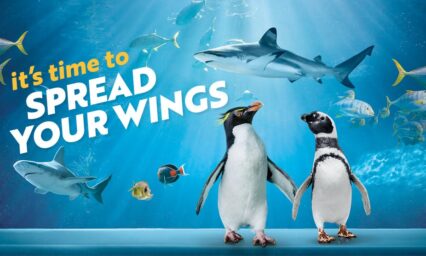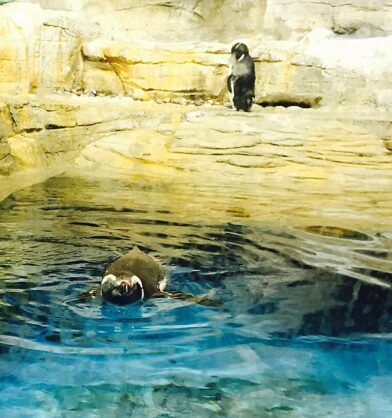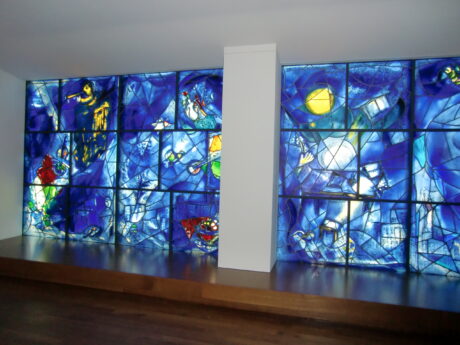
Normally, the works of fifty-one year old American composer/arranger James Stephenson, Lake Forest, IL, are played by such orchestras as the Boston Pops, Chicago Symphony Orchestra, the LA Philharmonic and the National Symphony.
However, on Jan. 20, 2021 in front of 40 million people watching the Biden-Harris inauguration (Nielsen ratings), his “Fanfare for Democracy” led off the three fanfares played by “The President’s Own” United States Marine Band.
Directed by Col. Jason K. Fettig, “The President’s Own” United States Marine Band plays for inauguration ceremonies, state dinners and other White House functions. (Note: Thomas Jefferson is credited with the nickname “The President’s Own.”)
How Stephenson’s fanfare, and indeed, the theme of the US Marine Band’s music prelude to the swearing-in ceremony came to be, offers some insight into the tension surrounding the 59th quadrennial presidential election and inauguration.
“The week after the Nov.3 election had been a week of turmoil. So, on Saturday when we finally heard that Biden was confirmed, my wife (Sally) and I went for a walk with the dog. It was warm, 70 degrees, and people were out. People were feeling relieved that the democratic process had been gone through. It was energizing,” Stephenson recalled.
“I started hearing music in my head. Then, while we were having drinks and a meal with friends I couldn’t focus on that. I kept hearing the music. I went home and wrote it in five hours. It felt good. I had done my duty. It was my response,” he said.
“What I had remembered was the image of Biden and wife Jill standing on a stage in Delaware while fireworks went off in celebration of the moment. I wanted to capture that feeling,” said Stephenson.
Because the composer had previously worked with Col. Fettig, including writing a symphony that Fettig commissioned and that won the prestigious Sousa/Ostwald Competition, the idea of sending the fanfare to the U. S. Marine Band was foremost on Stephenson’s mind.
As a result, a musical fanfare program was developed.
“He said I can move some things around. Your fanfare has given me some ideas. This can be composers’ responses to American democracy,” said Stephenson.
When asked about Stephenson’s contribution to the inauguration, Col. Fettig said, “Jim and I have had a very fruitful and long-standing creative collaboration, and his music really speaks to me as an interpreter of new music. I find myself returning time and again to his music; he is such a versatile and virtuosic composer, and he has the rare ability to write for absolutely any occasion and ensemble, and hit just the right mark.”
Fettig added, “When I first heard Jim’s new fanfare inspired by the symbol of Democracy inherent in the Presidential Inauguration, it was a foregone conclusion in my mind that we would perform it live for the occasion. Jim’s music is always deeply moving, and this brief fanfare immediately and brilliantly captures the indomitable spirit of the nation for the listener.
“I was thrilled to have the opportunity to give it a featured place in the special soundtrack we crafted for this historic moment. The reception for his piece and all of the music that Marine Band performed on Wednesday has been incredible, and far beyond anything I could have imagined,” he said.
Two other composers’ fanfares completed that part of the Marine Band’s program: “Fanfare for Tomorrow.” by Altadena, CA composer Peter Boyer and “Fanfare Politeria” by Southern Illinois University-Edwardsville composition professor Kimberly K Archer.
They only had 12 days to compose and send their fanfares due to the uncertainty of how and where the inauguration ceremony would take place.
Stephenson explained: “The Colonel didn’t know if the band would be playing because of what happened on Jan 6 and whether Biden would be inside or what would still take place. He did find out Sunday that the Marine Band would be playing.”
A weekend after the inauguration, Stephenson has had time to take in how everything came together.
“At the moment, I wasn’t really allowed time for reflection or celebration because both my wife and I were running around the house checking various stations on various TVs to find the one that didn’t have talking-heads constantly overcoming the music. So it ended up with me in one room and her in another trying to take in what we saw on the station we each independently found,” said Stephenson.
“Now, that I’ve found more time to go back and take it in, I’m especially excited at hearing my name spoken and announcing the world premiere in the same space of where so much history and pageantry has occurred. That was pretty cool, and I’m going to go ahead and allow myself to be a bit proud of that,” he said.
“I also think a shout-out is deserved for the Colonel, of course, but also for the members of the band. They awake at 1:30 a.m. to be there, and go through so much ritual and sitting/waiting. Then, to perform so well in such cold weather, is no small feat. They are a true testament to professionalism and talent.”
(Ed note: James Stephenson’s current project is writing a new ballet for the San Francisco Ballet called “Wooden Dimes.” A period ballet piece, it is set to premier in March on film instead of live because of the pandemic.)
Jodie Jacobs




